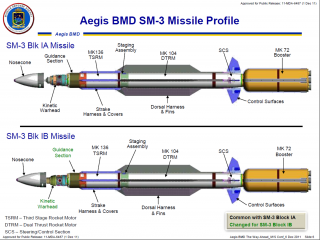Europe is Getting An American Anti-Missile System That Might Not Work
Can it be fixed?
America’s missile defense umbrella is supposed to protect Europe from Iranian (and perhaps Russian) ballistic missiles.
But vital tests haven’t been performed, and there are delays in building missile defense sites in Poland. All of which means that the anti-missile shield over Europe may be leaky.
The U.S. Missile Defense Agency has conducted only seven out of eleven planned tests in 2018, or just 64 percent, according to a Government Accountability Office study. At the same time, problems with contractors have delayed construction of an anti-missile system in Poland by eighteen months.
Begun by the Obama administration, the U.S. missile defense effort in Europe—the European Phased Adaptive Approach—has three parts. Phase I, completed in 2012, comprises a missile defense radar in Turkey and command center in Germany, supporting U.S. Navy ships equipped with the naval version of the Aegis missile defense system. Phase II was completed in 2016, when an Aegis Ashore site in Romania became operational. The delay has been in phase III, in which an Aegis Ashore site in Poland was supposed to be ready.
The Aegis Ashore sites in Romania and Poland are land-based versions of the naval Aegis, each consisting of a powerful SPY-1 radar and twenty-four SM-3 interceptor rockets. Aegis Ashore is aimed at stopping short-, medium- and intermediate-range ballistic missiles. Iran has built an arsenal of ballistic missiles, including intermediate-range ballistic missiles (IRBMs) that could—in theory—be armed with nuclear warheads if Iran develops them.
Ironically, GAO sees the delay in building the Polish Aegis Ashore site as an unexpected godsend that gives Aegis time to work out the bugs. “Testing for EPAA Phase 3 against planned threats has been substantially reduced and other vital testing has been deferred until after delivery,” auditors pointed out. “MDA officials consider EPAA testing for Phase 3 delivery complete. However, DOD guidance and acquisition best practices stress the importance of testing to understand the extent of capabilities and how to deploy them. The eighteen-month delay to EPAA Phase 3 provides MDA an opportunity to conduct additional testing and collect more performance data. This testing could provide the warfighter with more information and confidence in the system's ability to protect our allies against expected ballistic missile threats.”
In fact, delaying EPAA Phase 3 would give European missile defense a breather to solve a major problem that has bedeviled missile defense since the 1960s: how to stop multiple missiles and warheads without the system being overwhelmed. MDA’s original plan “included five IRBM intercepts across three tests, including tests to assess capability against small raids requiring simultaneous intercepts of multiple missiles—a likely tactic in a real-world attack—prior to delivery of EPAA Phase 3,” GAO noted. However, “the current plan reduces the number of intercept tests against an IRBM and does not include a flight test against a raid until after EPAA Phase 3 capability is declared.”
Less testing means less data to ensure that European missile defense works as planned. “EPAA Phase 3 intends to provide a robust defense against IRBM and raids of multiple targets, but tests to demonstrate that capability have been reduced from five to one with the test against the raid scenario is not occurring before the capability is delivered,” GAO concluded. “Our prior work has shown that proceeding with limited test data can result in late, and costly, discovery of performance problems. More thorough assessment of the capabilities and limitations of the system could mitigate that risk by building a more solid base of knowledge.”
Michael Peck is a contributing writer for the National Interest. He can be found on Twitter and Facebook.
Image: Wikipedia.

